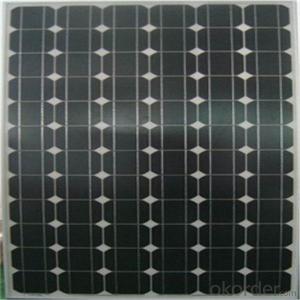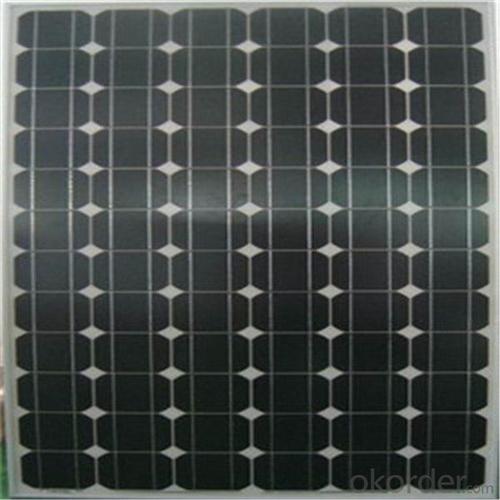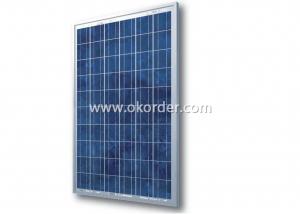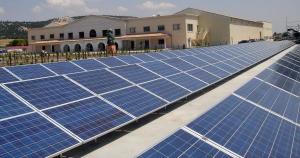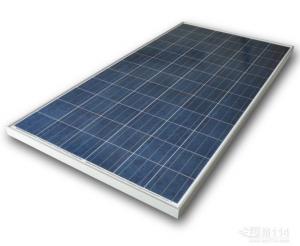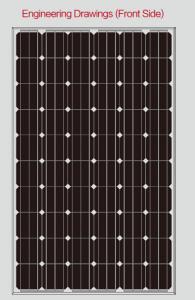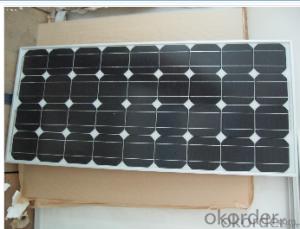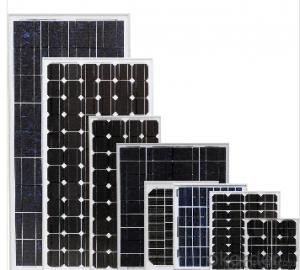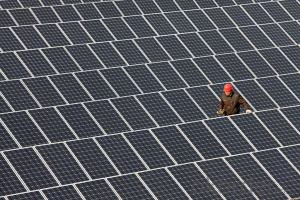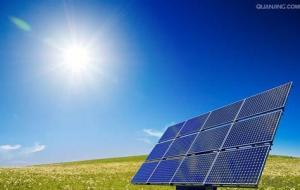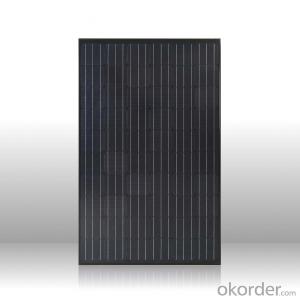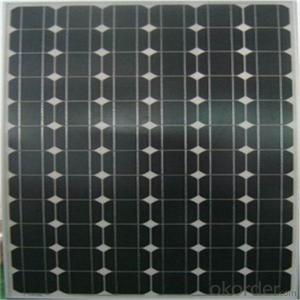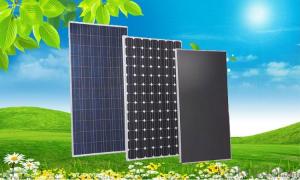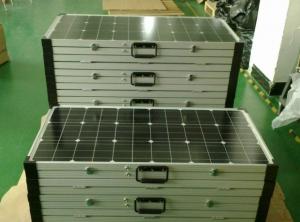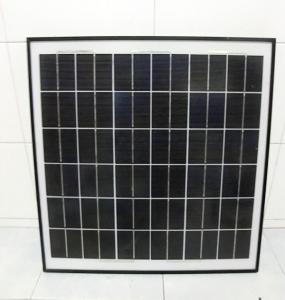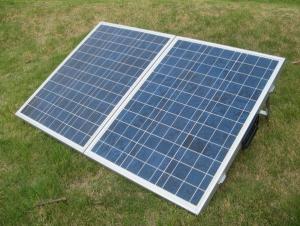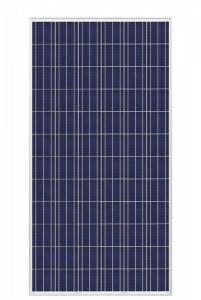250W PV Mono Solar Panel on Tin Roof - High Quality
- Loading Port:
- Tianjin
- Payment Terms:
- TT OR LC
- Min Order Qty:
- 1000 watt
- Supply Capability:
- 10000 watt/month
OKorder Service Pledge
OKorder Financial Service
You Might Also Like
Specification
Quick Details
Place of Origin: | Hebei, China (Mainland) | Model Number: | PSS250W | Material: | Monocrystalline Silicon |
Size: | 1580*1580*40mm | Number of Cells: | 78 | Max. Power: | 250w |
Max-power:Pm(W): | 250w | Power Tollerance: | 0 to +6W | Voltage at Pmax (Vmp): | 30.9V |
Current at Pmax(Imp): | 8.09A | Open-Circuit Voltage(Voc): | 37.7V | Short-Circuit Current(Isc): | 8.76A |
Cell Efficiency: | 17.3% | Moudule Efficiency: | 15.40% | ||
Advantages
Reason:
We enjoy exclusive channel to get stock solar panels at more competitive price from Trina,Hanwha,Yingli,LDK,Suntech etc.
These panels are from tier 1 solar panel manufacturers,such as Trina,Hanwha,Yingli,LDK.They are assembled with all grade A materials,only problem is that they has slight appearance defect,but due to their strict quality control,even the negligible defect will lower its grade.so they put these panels into stock.
Quality
These panels adopt all grade A materials,such as solar cell,EVA, back sheet, junction box, glass,frame,connector etc.
They have same electrical performance with grade A solar panels,only difference is the negligible superficial defect.
Our Service
Pre sale:
1.Our sales representative and engineer work together to answer your questions and offer solution for free
2.We choose the best product for you to make sure it worth its real value
3.We design the best solution with good perfomance for you,manwhile save every cent of your money.
After sale:
We provide 10 years Warranty for the product, 12 years warranty for 90% power production ,25 years warranty for 80% power production.
Packaging&Delivering
Packaging Details: | 22pcs/box,1box/pallet,264pcs for 20GP,616pcs for 40GP,700pcs for 40HQ |
Delivery Detail: | 45 days after payment |
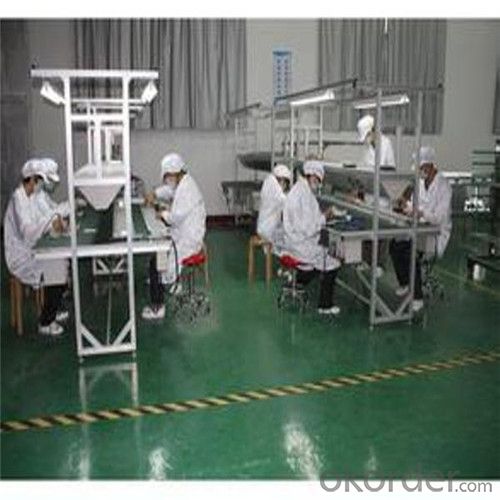
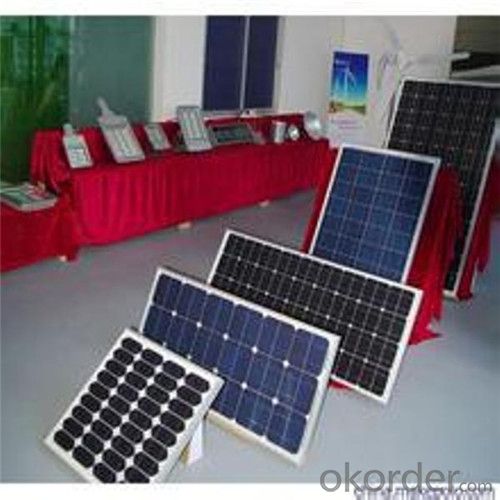
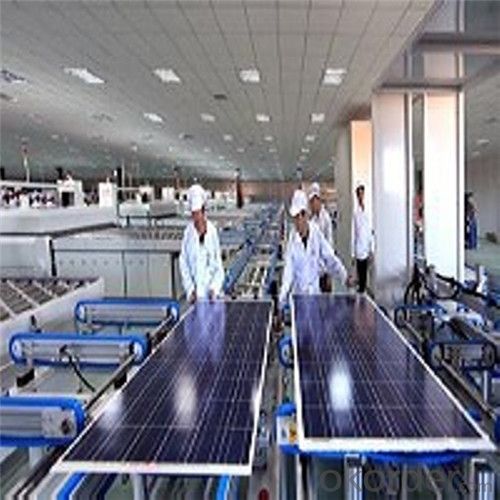

- Q: Hi. I need to build a solar panel for a project. it should be able to light a 60 watt light bulb. also, it should be about 3x3 ft if it is 50% efficient. if anyone knows any websites or can help me, please answer! thanks.
- Making your own photovoltaic (solar electric) panel is a nontrivial matter if you want to get 60 watts out of it. If this is a science fair project, there are some possible paths that I'd suggest: ) Make your own cupric oxide panel. With just one square foot, you can harvest perhaps 0.5 mW in bright sun - enough to power a solar calculator; -or- 2) Buy a panel to light your 60 watt bulb. You could probably get away with a panel that is 6 square feet, but would use a car headlight as the lamp. If you wanted to light a regular household bulb, you would need electronics to step up the voltage, and you would lose a sizeable fraction of the energy just in the conversion. -or- 3) Buy broken solar cell pieces, or individual solar cells, and solder them together into your own panel. This is a LOT of trouble, and is a finicky process to get working and keep working. And it may not end up being cheaper than buying a ready-made panel. But you can claim that you made it! By the way, crystalline silicon panels are in the ballpark of 5% efficient, and a 3' x 3' one would produce in the neighborhood of 20 watts.
- Q: 200 watt solar panel generates how much watts of electricity per month?
- watts of electricity per month is not a valid measure. You want to know watt-hours per month. A fair assumption may be 5 good hours of sunshine per day, or 50 hours per month. Thus, a 200W panel can produce 30 kilowatt-hours of electricity per month. Many more factors are involved, including your controller, battery charger, wiring, and battery system. At a typical retail rate of $0.5/KWh for electricity, this is worth $4.50 per month. Still, solar power can be cost-effective over the long haul.
- Q: How often do solar panels need to be replaced or repaired roughly? Is it costly to do so?
- Maintenance Of Solar Panels
- Q: the solar panel works with LEDs, small bulbs,etc but neve with any dcmotor. Please help. I have a science exhibition.
- It may be that the power output of your solar panel is not enough to drive the DC motor. It is producing up to 6 volts but it may not be producing many milliamps. LEDs need very little power to work but DC motors often need quite a high current to get them turning. If you can run several solar panels in parallel, you can probably increase the available current. Alternatively, can you expose the existing panel to much more light so as to get it to work at its maximum output? That might work. Good luck with your science exhibition.
- Q: Pretty much, can solar panel's support the entire houses electrical needs generally, because I know sometimes the owner's can sell unused electricity back, any ideas or any ideas on how much the average home uses in kWh
- it depens where you live(north or south)how many solar panel you have,what grade solar panels,how many rechargeable batteries etc.
- Q: i have a 2v 2a solar panel that i want to use to charge a 2v battery .Have found out that i need a charge controller so i don't over charge the battery.I have found a cheep one its 2v but 7a will it still work ?All-so im planing on running a 2v water pump off the battery with a timer,its for watering my garden.Will the timer have to be 2v as well ?any help on this would be greatly appreciated thanks .
- The charger will accept whatever current is necessary from the solar panel up to 7A. It's not like the solar panel will force 2amps into the charger/battery -- the charger will control the current going to the battery. I question whether or not the 2V panel will actually charge the battery, though, because in order to charge a standard lead-acid 2V battery you need to have about 4.5 volts applied to the terminals. Perhaps the charger has a boost circuit -- I don't know without looking at it or knowing the brand/model number, etc. The timer must be 2VDC, but, if you only have a timer that is rated for 20VAC, you can buy a small inverter that will take 2V and supply the necessary 20VAC. An inverter rated for 20 to 50 Watts should be sufficient. These usually cost under US$25. .
- Q: How do solar panels convert sunlight into electricity?
- Solar panels convert sunlight into electricity through a process known as the photovoltaic effect. This involves the use of semiconducting materials, typically silicon, which absorb photons from sunlight. When the photons strike the solar panel, they transfer their energy to the electrons in the material, allowing them to break free from their atoms. This generates an electric current, which is then captured and harnessed by the solar panel to produce usable electricity.
- Q: I have been thinking about getting solar panels for my house. What do you think I should get? Companies? Prices? I also have another question. How much energy can a small solar panel produce?
- A small panel will not produce much power. When people put solar electric panels on their house with the goal of saving money, they generally put up a lot of large panels - 200 or 500 square feet worth. Its hard to save money with just one panel. The only way to get close on how much it will cost and whether that represents a savings is to get out your electric bills for the past year, and call a local solar installer for a quote. The system on our house cost $20,000 and we got back $8,000 in incentives, so $2,000 net. It can save money, but that will be over many, many years.
- Q: I am looking at a need of roughly 30w/hour need per 24 hour period. I have spent several hours now looking for information online and have found plenty of info regarding the panels themselves, but information regarding the batteries backups have been slim. I understand that there is a 5-7 hour peak time to collect the energy. I am looking for information regarding the batteries themselves. How do the batteries work, what size batteries should I look for, and what is the life expectency for the batteries? Any website links would also be appreciated!
- Solar panels have their own characteristics and generate current depending on the intensity of sunlight falling on them and not on the temperature. Direction of the panel also makes lots of difference. Nowadays very thin panels are available at very high cost. The more area a panel occupies it generates more current. The current generated by a panel cannot be readily used since the current and voltage varies with the load connected to it. So normally a regulator is used to have constant voltage and constant current to come from the panel. This charges the battery. You have to calculate the total/normal current from the charger and then find the AH of the battery. When you have calculated the AH of the panel/charger then you can divide the AH of the battery by the AH of the charger/panel and find out the time taken to fully charge the battery. You also have to remember that there is a de-rating factor to be taken into consideration in the battery.
- Q: Could you have a solar panel in space that would transmit electricity remotely? Maybe have some kind of receiving antenna to pick up the energy? Perhaps there could be a string of them orbiting the Earth?Why wouldn't that work?
- Absolutely. Many satellites and other spacecraft that have been launched throughout history carry solar panels to power themselves. The International Space Station alone has hundreds of square meters of solar panels. Transmitting the power from one place to another wirelessly is a bit more difficult, but not fundamentally impossible. So far we don't have any good technology to do it over long distances. But we're getting there. One proposed future source of power is 'solar power satellites', orbiting devices that would collect sunlight and turn it into a microwave laser that would be fired down to the Earth and collected in a giant dish kind of like a radio telescope. The idea is that this would be non-polluting, environmentally friendly, reliable, would help to boost investment in space technologies, and wouldn't take up the large amounts of land area required for traditional solar power. However, some people have argued that it is a bad idea on the basis that if the laser accidentally missed the dish, and came down in an inhabited area, it might cause human fatalities or damage to the environment or human artifacts.
Send your message to us
250W PV Mono Solar Panel on Tin Roof - High Quality
- Loading Port:
- Tianjin
- Payment Terms:
- TT OR LC
- Min Order Qty:
- 1000 watt
- Supply Capability:
- 10000 watt/month
OKorder Service Pledge
OKorder Financial Service
Similar products
Hot products
Hot Searches
Related keywords
